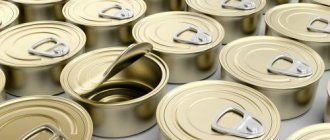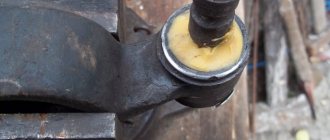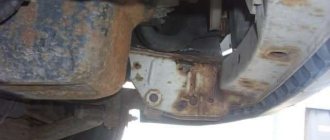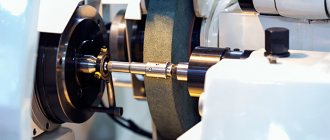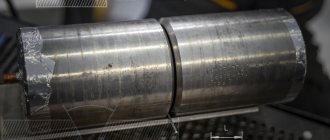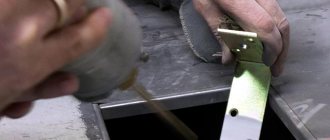25.03.2020
- Features of plumbing and mechanical methods for restoring parts
- Restoration of metal parts by welding and surfacing
- Repair and restoration of metallized parts
- Methods and methods for restoring parts by pressure
- Restoring and gluing parts using plastics
Even if some part of a functional unit or workpiece is damaged, this does not mean that it must be disposed of. Let's consider the main methods of restoring parts - the algorithm of actions and the equipment that needs to be used. For what? So that you know how to properly repair it, and can extend the life of a broken element, rather than spending money on an expensive replacement.
Let us immediately note that in all cases this is a complex process that involves preliminary, accompanying and/or subsequent processing. The latter is needed to ensure compliance with standard mating fits, as well as to remove the taper and ovality of deformed surfaces and ensure the final cleanliness of the coatings. The technological operations performed are planing, grinding, scraping, depending on the depth, size, and severity of the damage received.
Mechanical restoration method
A feature of this method is the restoration of the shape and relative position of surfaces without recreating the original dimensions. The goals are achieved in two ways:
- processing of both mating parts;
- processing one (usually more expensive and complex) part;
- instead of the second one, a serially produced repair one or a new one is installed.
For example, with the mechanical method of restoring car engine parts, the cylinder block and crankshaft are processed to the nearest repair size, and the associated ones - pistons, piston rings, liners - are replaced with new ones. Repair dimensions are set by the manufacturer. He also, as a rule, produces replacement products.
In the plumbing-mechanical method of restoring parts, the following operations are distinguished:
- grinding work (machine and manual);
- scraping on the plate and calibers;
- filing;
- lapping;
- fine-tuning
There is a prospect!
Surface roughness of parts
We have considered only a small part of the recovery methods used today. The development of new technologies for restoring parts is actively underway around the world, and our country is no exception. Although we still have room to grow. Today in Russia about 20% of the truck fleet is 10 years old or more, while in the USA about 40% of vehicles are this age. The base of repair institutions in the States includes 30 thousand automobile repair enterprises, 46 thousand automobile repair shops specializing in certain types of repairs, and in addition, about 200 thousand service stations and minor repair points located at gas stations. A somewhat more modest, but also impressive picture of the development of repair and restoration enterprises in other economically developed countries. Thus, in Japan there are about 80 thousand car repair enterprises.
Let's hope that in the foreseeable future Russia will also have a powerful repair and restoration industry. A sign of movement in the right direction is the widespread use of the aggregate method, when at a specialized enterprise an inoperable unit is replaced with a new one or restored from the working capital. The aggregate method separates the processes of industrial repair of units from the work of dismantling and installing them in operational conditions, which significantly reduces downtime during repairs and creates the prerequisites for centralizing work on current and major repairs of units.
Restoration by surfacing and welding
Restoring parts by welding and surfacing is one of the most common methods.
When surfacing, the following operations are performed sequentially. Treatment of a worn surface, the purpose of which is to remove the boundary layer of deposited metal from the treatment zone. Surface surfacing with an allowance sufficient for further processing. Processing of the deposited surface in accordance with the requirements of the drawing.
Types of surfacing of cylindrical surfaces
In cases where the wear of the mechanism exceeds the standards established by the manufacturer, another option may be used. Removal of the damaged part mechanically. Manufacturing a new product and welding it in place of the removed one. Heat treatment (if necessary). Final machining.
Welding is widely used in the repair of body parts in which cracks have formed. The technological process includes several operations:
- Determination of crack direction.
- Drilling into metal at a distance of 6–10 mm from the visible end of the crack.
- Removing the crack mechanically with simultaneous cutting for welding.
- Welding of a crack with a slight excess above the surface of the base metal.
- Surface treatment of the weld metal flush with the base metal.
- Checking geometric parameters.
- Treatment of mating surfaces (if necessary).
Preparing a crack for welding:
- cleaning the crack;
- drilling the ends.
Electric rolling stock of industrial transport
- From the authors
- Basic technical data of industrial electric locomotives and traction units
- Parameters and characteristics
- Mechanical and pneumatic equipment of electric locomotives and traction units
- Electrical equipment and apparatus
- Promising type of electric rolling stock for industrial transport
- Basic requirements for electric locomotives and traction units when working in industrial enterprises
- Dimensions
- Initial data for traction calculations
- Initial data for braking calculations
- Determination of train weight norm
- Brake calculation methods
- Checking traction motors for heating
- Determination of the required power of the autonomous power source for traction units
- Calculation of the need for electric rolling stock
- Determination of energy consumption for train traction
- Lubricants
- Diesel fuel
- Water
- Sand
- Brief information about materials used in structures and repairs
- Electrical machine insulation classes
- Requirements for equipment
- Stationary equipment devices
- Fuel and lubricants
- Preparing cooling water and caring for batteries
- Devices for inspection, external washing and cleaning of locomotives
- Devices for supplying fuel, lubricant and water to locomotives
- Supplying locomotives with sand
- Maintenance point
- Closed equipment station for traction units and electric locomotives with contact and contact-diesel power
- Mobile equipment
- Laboratories
- System for organizing repairs and maintenance
- Between repair periods, duration and labor intensity of repairs
- Scope of maintenance work
- Scope of work for current and major repairs
- Brief technology for repairing main components
- Technology for repairing typical connections and assemblies of used equipment
- Control methods
- Repair and maintenance of electrical equipment of traction units
- Special requirements for the repair of wheel sets, automatic coupling devices and brakes
- Methods for restoring worn parts during repairs
- Some information on workplace organization
- Safety measures when repairing electric rolling stock
- Preliminary tests
- Acceptance tests
- Periodic and type tests
- Special tests
- Materials and spare parts for repair of electric rolling stock of industrial transport
- Spare parts consumption standards
- Spare parts consumption standards. Mechanical equipment
- Spare parts consumption standards. Electric cars
- Spare parts consumption standards. Electrical equipment
- Spare parts consumption standards. Brake and pneumatic equipment
- Material consumption rates
- Usage rates and performance of electric rolling stock
- Cost of transportation
- Cost per locomotive hour
- Material and labor costs for repairs
- Costs for maintaining locomotive crews and equipment
- Energy costs
- Cost of electric rolling stock and depreciation charges
Operation of boring and restoring holes
Plastic deformation of restored parts
Restoring parts by plastic deformation involves recreating their shape and size due to the redistribution of metal under the influence of a load applied in a certain place and in a certain direction.
Products made from low-carbon steels (less than 0.3% carbon) and non-ferrous alloys are restored without heating. Medium and high carbon steels are heated to a temperature determined by the formula: Theating = (0.70.9) Melting
Main types of plastic deformation:
- upset or settling - changing the diameter of a cylindrical product by applying an axial load to the ends;
- expansion and compression - recreating, respectively, the outer and inner working diameters of a hollow body of rotation by increasing (decreasing) the internal non-working diameter;
- hood – increasing the length of a product due to local narrowing of its cross-section;
- knurling - processing surfaces using a toothed roller;
- straightening - recreating the shape and eliminating bending and twisting (can be done under pressure by creating local surface hardening and using local heating);
- The electromechanical method for restoring parts, used, as a rule, for processing bodies of rotation, includes two operations: creating a microrelief on the surface in the form of a spiral line; smoothing to a given size using a deforming plate.
Related:
| Textbook for universities/T. V. Pleteneva, E. M. Salomatin and others; edited by T. V. Pleteneva. M.: Geotar media, 2005 Cocaine va uning narcologist ahamiyati. Cocaine drug drug druglari va ularning tagil usullari | Textbook for universities/T. V. Pleteneva, E. M. Salomatin and others; edited by T. V. Pleteneva. M.: Geotar media, 2005 Phenothiazine khosilalari, ularning narcologist ahamiyati, turli objectlardan azhratib olish va tagil usullari |
| List of bilateral/multilateral agreements in the railway transport sector ru Agreement between the Government of the Republic of Uzbekistan and the Government of Ukraine on cooperation in the field of railway transport…. | Textbook for universities/T. V. Pleteneva, E. M. Salomatin and others; edited by T. V. Pleteneva. M.: Geotar media, 2005 Psychotrope moddalar. Barbituratelarning narcologist ahamiyati. Barbiturate ranli, yupka katlam chromatographic, spectrophotometric va… |
| Date Contents 09. 03 Round table meeting Round table meeting “Ecology and youth” at the Tashkent Institute of Railway Transport Engineers. Organized by... | Textbook for universities/T. V. Pleteneva, E. M. Salomatin and others; edited by T. V. Pleteneva. M.: Geotar media, 2005 Analgesic drug. Opium istemol qilish drug addiction. Morphinism. Morphine khosilasiga kiruvchi narcotlar, ularning hossalari va... |
| Documents1. /Tashkent Institute of Railway Transport Engineers.doc | Documents1. /MAIN PROBLEMS OF RAILWAY TRANSPORT ECONOMICS.doc |
| Seminar of the Tempus project for universities in the Fergana ValleyMinistry of Higher and Secondary Special Education of the Republic of Uzbekistan, National Office of Tempus of Uzbekistan, Fergana… | Resolution of the President of the Republic of Uzbekistan June 15, 2005 No. PP-100 on improving the reporting system presented by business entities and strengthening liability for its illegal collection In order to create more favorable conditions for the activities of business entities, improving the reporting system... |
| Resolution of the President of the Republic of Uzbekistan June 15, 2005 No. Pp-100 on improving the reporting system presented by business entities and strengthening liability for its illegal collection In order to create more favorable conditions for the activities of business entities, improving the reporting system... |
Documents
Documents
Electrochemical methods for restoring parts
To restore parts by applying metal coatings, the galvanic method is used, with which the following is applied:
- chromium;
- nickel;
- iron.
Chrome and nickel coatings have a thickness of 0.25 - 0.3 mm, iron 2 - 3 mm or more. Iron plating in its parameters is close to surfacing, however, it provides relatively low hardness. There are smooth or porous coatings used for movable and fixed joints.
Non-metal coating
The essence of this method is:
- in applying a layer of a two-component polymer composition to a previously cleaned and degreased surface;
- in fixation with the help of auxiliary devices (if necessary).
Compared to galvanization, the application of non-metallic coatings has a number of advantages:
- simplicity, no need for preliminary mechanical treatment of the surface being repaired;
- possibility of applying a thick (10 – 15 mm) layer of polymer.
At the same time, such coatings are noticeably inferior to metals in wear resistance and durability.
The essence of hardening by deformation. Physics of the process
How do the strength properties improve when the surface layer is deformed? Good question. The answer to this lies in the radiation theory of the atomic structure of crystalline substances.
Scientists were able to prove that strength depends on the number of defects in the crystal structure. According to their calculations, a thin metal thread made of ideally pure iron without point or linear structural defects is capable of withstanding colossal loads. However, real bodies always have defects, so the load-bearing strength of such wire in real conditions is quite small. But when the number of defects increases, a paradoxical phenomenon arises - the strength characteristics improve. This is explained by the fact that a large number of defects creates obstacles for their movement and emergence to the grain surface, that is, it prevents the occurrence of stress concentrators.
This is precisely what the strengthening effect of pressure treatment is based on: during deformation, a huge number of defects appear inside the grains. At the same time, the grains themselves acquire a characteristic shape - the so-called texture. It should be noted that this method allows not only to increase strength and wear resistance, but also to reduce the roughness of the treated surface.
Soldering worn parts
It is used mainly in the restoration or repair of thin-walled products made from dissimilar materials, to eliminate defects in welds and to assemble electrical circuits. The order of technological operations when soldering:
- Surface cleaning.
- Flux processing.
- Soldering.
With all the variety of methods for restoring parts, it is worth considering which metal structures will be restored. Based on this, the choice of option is made on the basis of a set of problems that need to be solved in a particular case. These are economic parameters, the prevalence or uniqueness of the product being restored, the availability of equipment and materials, and, ultimately, the feasibility of repairs.
